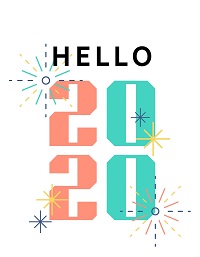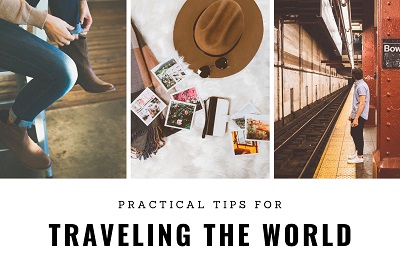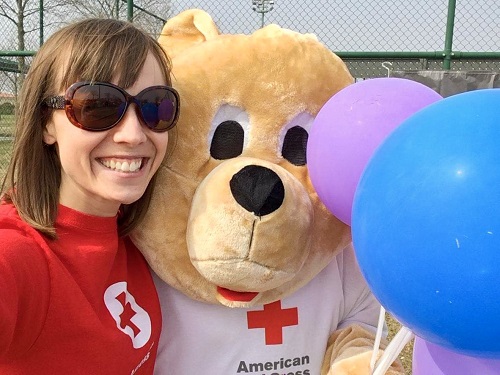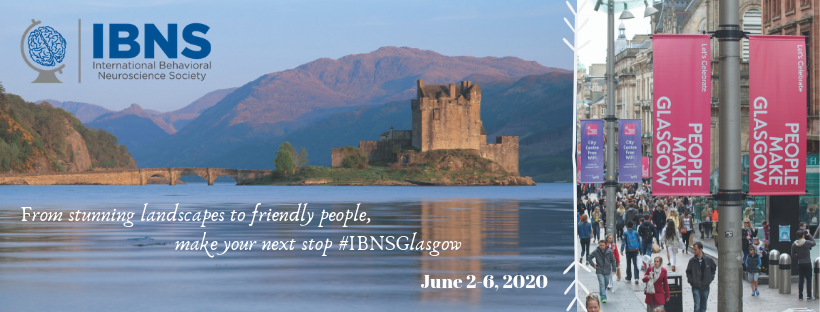|
In this Issue...
- Happy New Year from IBNS
- Tips and Tricks for International Travel
- IBNS 2020: Upcoming Meeting Deadlines
- Trends in Neuroscience
- Hobby Much? Volunteering For the Fun of It
Happy New Year from IBNS
Dear Colleagues, 
As this time of year is special to many, we would like to take a moment to wish you and your family a joyous holiday season! Thank you for your participation in this growing and beneficial Society. In this abbreviated holiday edition of the IBNS Newsletter, we hope that you will take special note of the travel tips and upcoming deadlines for IBNS 2020. If you have questions regarding preparations for #!BNS2020 please reach out to the IBNS Central Office for guidance ([email protected]). We look forward to seeing you in Glasgow, Scotland, and wish you a wonderful new year.
Warmest regards,
IBNS Central Office and the Membership and Communications Committee
Back to Top
Tips and Tricks for International Travel
By Marianne Van Wagner & Alison Watson, MBA
IBNS Central Office
Traveling on a budget?? You've worked hard and saved up for that next trip (hopefully IBNS 2020 in Glasgow, Scotland). You have your budget carefully managed but what about the unexpected?

You can minimize the consequences of the unexpected in travel, whether it is as simple as a missed flight, or as serious as an accident. Travel insurance can help you financially for the unexpected costs associated with sudden illness or a medical emergency, missed or delayed flights, trip cancellation, canceled tours, lost baggage, theft, terrorism, emergency evacuation, etc. Some health insurance policies won’t cover you in other countries, should you require medical/dental treatment or hospitalization. Travel insurance can cover these eventualities and many policies can be customized to fit your needs.
As experienced travelers, we recommend spending a few dollars to ensure that you are covered for the unexpected in travel. Though we don't wish to steer anyone to a particular travel insurance company, one should look online at the different insurance options, because you can buy single OR multi trip policies. Compare the pros/cons and find the policy that is right for your particular travel schedule. Happy travels!
Back to Top
IBNS 2020: Upcoming Meeting Deadlines

| January 13 |
Travel Award Notifications
|
| February 1 |
Fellows, Outstanding Achievement Award and Early Career Award nominations due
Click here for details on these awards and the nomination process.
|
| February 3 |
Abstract Submissions Due (Form opens Oct. 1, 2019)
2020 Abstract Form
|
| February 3 |
Early Discounted Registration Ends (Form opens Oct. 1, 2019)
Registration Form
|
| Feb 14 |
Final date to submit an Abstract Due (poster only)
|
| March 13 |
Exhibitor Registration Deadline
Exhibitor Registration
|
| May 1 |
Late Registration Begins (added $50 late fee)
|
| May 1 |
Last day for cancelled registration refunds (minus $25 service fee)
|
| June 2-6 |
Conference Dates
IBNS 2020 starts with Welcome Reception: June 2
IBNS 2020 ends with Awards Banquet: June 6 (until midnight)
Recommended Departure: June 7
|
For discounted registration and hotel room rates you must be an IBNS member. Apply for IBNS membership prior to completing the registration form. Once a member, please reserve your discounted hotel room at the Radisson Blu as soon as possible as the location will fill up quickly. Should you need a roommate at the meeting to save costs, contact the IBNS office for assistance ([email protected]).
Back to Top
Trends in Behavioral Neuroscience
By Don McEachron, Ph.D., Editor-in-Chief
Drexel University, USA
From Science
 Professor Michael Brecht of Humboldt University Bernstein Center for Computational Neuroscience Berlin (BCCN) and his colleagues were curious if the numerous YouTube videos indicating that pets played hide and seek with their owners were really demonstrating this type of complex play. The nature of animal play and its evolutionary functions is a matter of controversy and the group was interested in whether or not rats were actually able to comprehend and engage in the complexity of a true hide-and-seek scenario. The group created 7 hiding places for the rats and three for the ‘gamemaster’, Dr. Annika Reinhold. The game centered around a box in which an individual rat would be placed. When the rat was the ‘seeker’, Dr. Reinhold would hide and open the box by remote control and the adolescent male rat would seek her out in one of her hiding places. When Dr. Reinhold was the seeker, she would duck down beside the box while rats would jump out and scampered off to one of the 7 hiding places. When either the participant or Dr. Reinhold was ‘found’, the reward was not food but rather a social interaction – petting and tickling the rat. Professor Michael Brecht of Humboldt University Bernstein Center for Computational Neuroscience Berlin (BCCN) and his colleagues were curious if the numerous YouTube videos indicating that pets played hide and seek with their owners were really demonstrating this type of complex play. The nature of animal play and its evolutionary functions is a matter of controversy and the group was interested in whether or not rats were actually able to comprehend and engage in the complexity of a true hide-and-seek scenario. The group created 7 hiding places for the rats and three for the ‘gamemaster’, Dr. Annika Reinhold. The game centered around a box in which an individual rat would be placed. When the rat was the ‘seeker’, Dr. Reinhold would hide and open the box by remote control and the adolescent male rat would seek her out in one of her hiding places. When Dr. Reinhold was the seeker, she would duck down beside the box while rats would jump out and scampered off to one of the 7 hiding places. When either the participant or Dr. Reinhold was ‘found’, the reward was not food but rather a social interaction – petting and tickling the rat.
The majority of rats studied in two separate trials were able to learn the game and the rules – maintaining roles assigned throughout a given episode or run of the game. In fact, there was evidence of advanced planning or strategizing – on occasions when Dr. Reinhold was searching the room, a rat would move from its current hiding place to one she had already examined, as if the rat had calculated that Dr. Reinhold would not recheck a spot that had already been examined. Also, despite making ultrasonic squeaks when acting as the seeker, the same individuals would maintain silence when hiding, supporting the hypothesis that the individual rat understood the role it was playing in different scenarios or iterations of the game. Recordings from pre-frontal cortex revealed very high levels of activity form selected neurons which varied with game events and roles being played.
The research group also suggested that the reward for playing the game might be play itself rather than the interaction with the research after the end of the game. Some rats would engage in ‘joy jumps’ after locating the researcher and in some cases, individuals would attempt to hide again after being found, an action which extends the game but postpones any reward associated with interacting with the research in the form of petting and/or tickling. The group also hypothesized that the level of cognitive complexity shown might indicate that the ability to engage in this type of play is evolutionarily old.
Reinhold, A.S., Sanguinetti-Scheck, J. I., Hartmann, K. & Brecht, M (2019) Behavioral and neural correlates of hide-and-seek in rats. Science 365, (6458): 1180-1183 DOI: 10.1126/science.aax4705
From Neuroscience News, December 19, 2019
Maintaining cognitive ability is a critical issue in an aging population. In this observational study, Iowa State researchers led by Dr. Auriel Willette, an Assistant Professor of Food Science and Human Nutrition and Ph.D. student Brandon Klinedinst examined data from 4431 cognitively unimpaired late middle-aged men and women (mean = 64.5 y) from the UK Biobank prospective cohort. The researchers found that lean muscle mass (LMM) predicted gains in fluid intelligence (FI) scores for both men (b = 0.089, p< 0.001) and women (b = 0.130, p< 0.001). Moreover, both visceral and non-visceral adipose tissue (VAM and NVAM) independently predicted declines in FL in both men and women (ex. NVAM: men: b = - 0.076, p< 0.001; women: b = - 0.082, p< 0.001). Associations were presented indicating that at least some of these effects may be mediated by changes in specific blood leukocyte populations.
The researchers suggested that chronological age may not be as important as biological age in types of cognitive function, biological age being mediated by the balance between lean muscle mass and adipose tissue and the effects this balance has on aspects of immune function. Whether or not this has a direct association with Alzheimer’s disease is unknown at this time, but maintaining a healthy diet and appropriate exercise regimen would appear to be critical for maintaining cognitive function as we all inevitably grow older.
Klinedinst, B.S., Pappas, C., Scott, L., Shan, Y., Wang, Q., Allenspach-Jorne, K., Mochelf, J.P., Willette, A.A. (2019). Aging-related changes in fluid intelligence, muscle and adipose mass, and sex-specific immunologic mediation: A longitudinal UK Biobank study. Brain, Behavior, and Immunity 82: 396-405. https://doi.org/10.1016/j.bbi.2019.09.008
Back to Top
Hobby Much? Volunteering For the Fun of It
By Julianne Jett, Ph.D., Guest Editor
University of Texas Health San Antonio, USA
In the most general sense, the word ‘hobby’ refers to an activity outside of one’s occupation done regularly for pleasure. These activities commonly include aspects of creativity (e.g., photography, music, crafting), physical fitness (e.g., yoga, sports, dancing), exploration (e.g., travel, hiking), or introspection (e.g., writing and reading). I often dabble in the arts for leisure, but also like to spend my “spare time” volunteering with organizations in my community. This got me thinking – can volunteering be a hobby?
I have volunteered since I was in high school, which is to say a very long time. I predominantly volunteer for school events or occupation-related efforts, like teaching and serving on committees, to provide mentorship and support for others (e.g., students, program development, STEM advocacy). But, let’s be honest, volunteering in this capacity equally benefits my career by providing opportunities to hone my skills, expand my network, and add accolades to my CV that could benefit employment and funding opportunities. It wasn’t until I volunteered with the American Red Cross that I stepped out of my academic/research comfort zone and donated my time simply for the fun of it, meaning zero preparation, zero expectation, and zero professional gain.
The first Red Cross event that I supported had volunteers prepare care packages for deployed soldiers. Though the project was physically taxing, I walked away feeling relaxed, accomplished and grounded, much like I do with traditional hobbies like art. As I continue to volunteer outside of my occupation, I find this practice helps me to de-stress by disengaging me from work both physically and mentally (i.e., turn off deadline and problem-solver modes). Additionally, the tasks assigned are commonly short-term, so I have the satisfaction of completing a project within hours versus days or months as is common with research. But more importantly, the opportunity to improve the well-being of my community gives me perspective and a great sense of fulfillment by helping others.
Much like traditional hobbies, volunteering with community programs also benefits my mental and physical health. Between the endless deadlines and long hours in the lab, research can be a stressful and isolating profession. Taking time to support my community reminds me that I have interests and value outside of my career, which is a healthy perspective to maintain with the trials and tribulations of research. Likewise, volunteering has given me a strong sense of social connectedness by providing opportunities to build relationships with a diverse group of people. Extensive research has shown that social support benefits immune, endocrine and cardiovascular functions, as well as mental health, in part by preventing physiological wear and tear on the body during long periods of stress (for review see House, Landis and Umberson, 1988; Umberson and Montez, 2010). More anecdotally, I find occasions to learn new tasks, be exposed to other ways of life, and further develop my interpersonal skills exciting and beneficial for my cognitive fitness.
I would be amiss if I didn’t admit that volunteering with community programs has also benefited me professionally. Though professional gain was not my intent, supporting my community by volunteering with the American Red Cross and National Alliance on Mental Illness (NAMI) has given me opportunities to learn new skills and experience alterative employment opportunities with little to no risk. Furthermore, realizing that skills gained during my graduate training (i.e., critical thinking, problem solving, data management, rapid application of new information) were highly desired across professions was a stress-reducing experience in and of itself.
I never imagined that volunteering as a hobby would provide opportunities to speak on the radio regularly, manage blood drives, organize first aid support for search and rescue teams, meet with military leadership to advocate for improved mental health resources, and serve as a Board Director and program advocate for NAMI Spokane. My point? Sometimes we get stuck under the burdens of work and have tunnel vision or burnout as a consequence. Like other hobbies, volunteering outside of your occupation can provide a much needed break, improve your well-being by helping others, open doors to new opportunities, or lead to interests not previously considered. When volunteering, you never know who you will meet, what new skills you will acquire or how the experience of supporting your community will impact you personally and professionally. So, what are you waiting for? Get out there and volunteer simply for the fun of it!

Julianne Jett recruiting blood donors with the American Red Cross mascot Scrubby Bear. In collaboration with the Armed Services Blood Program, operations collected over 250 pints of blood, which equated to 800+ lives saved.
House, J.S., Landis, K.R., Umberson, D. (1988). Social relationships and health. Science, 241: 540-545. https://doi.org/10.1126/science.3399889
Umberson, D., Montez J.K. (2010). Social relationships and health: A flashpoint for health policy. J Health Soc Behav, 51 (S): S54-S66. https://doi.org/10.1177/0022146510383501
Back to Top

Back to Top
May Newsletter vol 23-8 Guest Editor:

Julianne Jett, Ph.D.
University of Texas Health San Antonio, USA
Thank you for volunteering your time, Julianne!
Interested in serving as a Guest Editor for the IBNS News?
Email: [email protected]
Back to Top
|